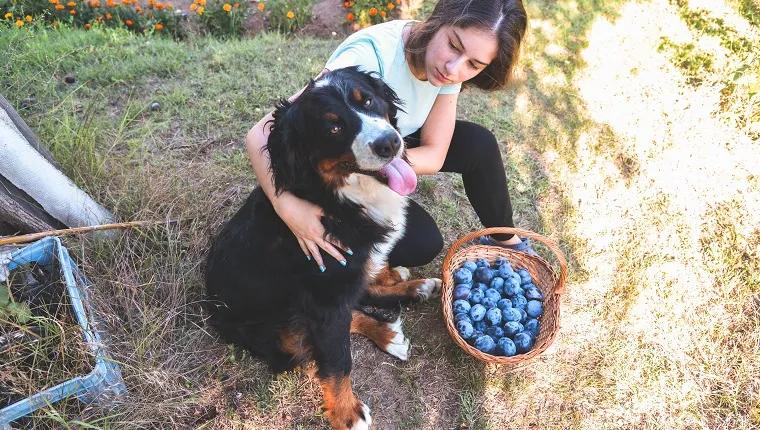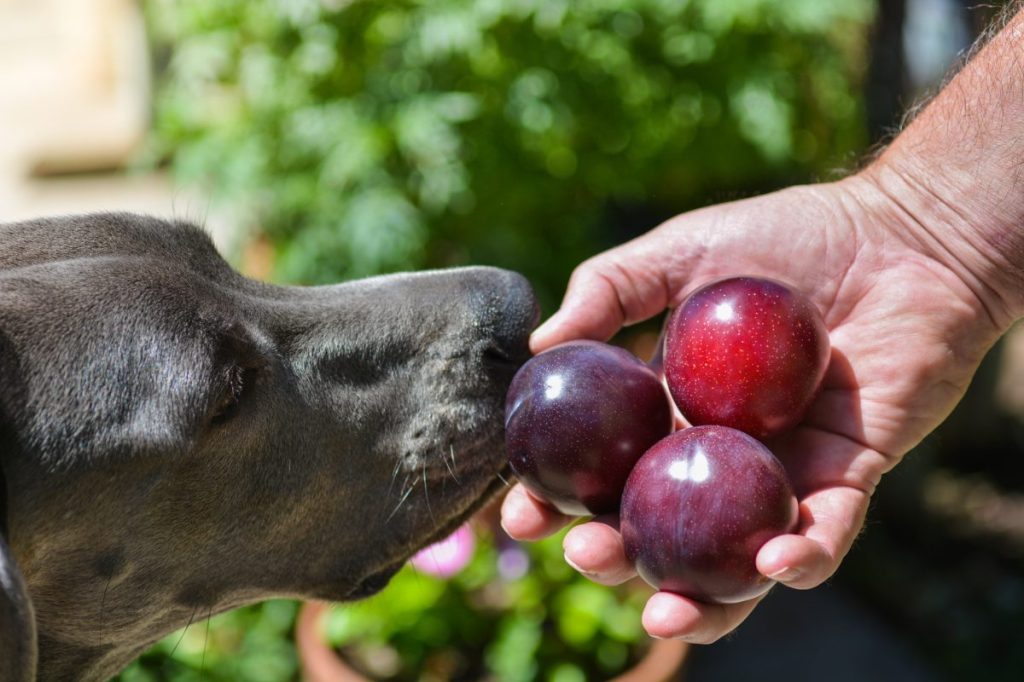Can dogs eat plums? Maybe you’ve been snacking on some juicy plums and found yourself wondering whether your dog might also benefit from being served some as a treat. If humans can eat plums, can dogs also safely eat them?
The short answer is no, dogs can’t safely eat plums. While the ripe flesh of a plum is not toxic to dogs, both the pit and the rest of the plum plant contain a lot of toxins, including cyanide.
Here’s what you need to know about plums and dogs.
Why Are Plums Bad For Dogs?
If your dog takes a small bite of a ripe plum, they will probably be okay. The flesh of a properly ripened plum is not toxic to dogs.
But the rest of the plum plant — including the flowers, the stem, and the roots — contain a number of toxins including cyanide. Along with cyanide, parts of the plum plant also contain prunasin, amygdalin, and cyanogen.
If a dog consumes even very small amounts of the toxic parts of a plum, some of the most common symptoms that might develop include:
- Tremors
- Vomiting
- Breathing difficulties
- Stomach problems
In the most severe cases of plum poisoning, which occurs when the toxins have entered the animal’s bloodstream, dogs might end up suffering from kidney failure or even pass away.
What Should I Do If My Dog Eats Plums?

The first thing to do if you notice that your dog has eaten some plums is to try and figure out exactly how much and which parts of the fruit they have eaten.
If your dog has managed to steal a plum from a fruit bowl and has just taken a bite without ingesting the plum pit, there’s a good chance they will be okay.
But if you notice that they’ve consumed the plum pit or have eaten other parts of a plum plant, then you’ll need to monitor closely for signs of discomfort and any of the common symptoms of plum poisoning listed above.
If your dog displays symptoms of plum poisoning or you suspect that they’ve managed to eat a significant number of plums, you’ll need to call your veterinarian. They’ll likely want to carry out an examination of your dog to look for further signs of plum poisoning.
In some cases, the use of sodium nitrite administered via an intravenous drip can help remove the presence of cyanide from your dog’s bloodstream.









